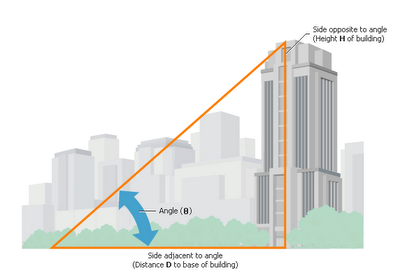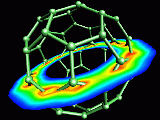Thursday, December 07, 2006
A Safe Assignment,
Newton's Laws Preview
Dropping A 300lb. Safe On A Buick
This weekend's homework:
(1) Based on how long the safe took to hit the Buick, how tall is the building?
(2) Provide (& explain) examples of inertia from this demonstration.
(3)What forces are acting on
(a) The safe?
(b) The Buick?
You may e-mail your answer to Mr. B directly or enter it as a comment on this blog (either way, you have to show your work. Blog responses will not be published until after the assignment due date.)
Here's a helpful kinematics video (The Physics of Martials Arts)sent in by Montessori's Ms. Guglielmini:
Up Next for the Class: Newton's Laws
Here's a brief Tutorial on Newton's Laws using Hypothetical examples (and the same Prentice Hall Conceptual Physics textbook we use):
note: projectile motion is not included
Thursday, November 16, 2006
A Problem or Two
 An elephant jumps sideways from a 25 meter-tall platform. He jumps from the platform with an initial velocity of 4 meters per second to the right.
An elephant jumps sideways from a 25 meter-tall platform. He jumps from the platform with an initial velocity of 4 meters per second to the right.1) How long till he lands?
2) How far from the platform will he land?
3) In the instant before he lands, how fast is he moving to the right?
4) In the instant before he lands, how fast is he falling?
 Another Problem to consider:
Another Problem to consider:A plane is heading East at 115 meters per second, flying at an altitude of 1050 meters. A clown jumps out of the plane.
1) How long will the clown be in the air, from the moment he leaves the plane to the moment he hits the ground (don't worry, clowns bounce!)
2) How fast will he be moving to the East in the instant before he hits the ground?
3) How fast will he be falling in the instant before he hits the ground?
4) How far, from the point where he left the plane, will the clown land.
5) What does Mr. B have against clowns and elephants?
Tuesday, October 17, 2006
Exam Prep
A few links to conceptual and actual practice problems and further info...
In general, your best bet is to check out the first couple of chapters in The People's Physics Book. The questions at the end of the units & problem-solving chapter and the one-dimensional motion chapter are comperable to what you can expect to see on the exam.
Other helpful links for conceptual understanding and practice problems:
General Summary from the Saint Mary's (Manhasset NY ) website. Position, velocity and Acceleration at the fabulous Fear of Physics website
Stuff to know:
Motion / Graphing Motion:
(Velocity, Distance, Acceleration)
The physics of motion along a line Describing motion with words Describing Motion with Diagrams Free Fall and the Acceleration of Gravity
In general, your best bet is to check out the first couple of chapters in The People's Physics Book. The questions at the end of the units & problem-solving chapter and the one-dimensional motion chapter are comperable to what you can expect to see on the exam.
Other helpful links for conceptual understanding and practice problems:
Stuff to know:
- Units, Scientific Notation, Significant Digits
- Distance vs. Displacement, Scalar vs. Vector
- Vectors, vector addition, Vector Diagrams
- Average Velocity, Constant Velocity, Instantaneous Velocity
- Free Fall, Up & Down Free Fall
Motion / Graphing Motion:
(Velocity, Distance, Acceleration)
Sunday, October 15, 2006
Thursday, October 05, 2006
Bowling for Physics
With Round one of the QHST Physics Bowling tournement now complete, the score so far is:
Physics Teachers: 0
Physics Students: 0
Montessori AP's: 0 (though the team was floored by the competition)
4th Floor hallway: 6
The tournement resumes early Wednesday morning with the Emerson Physics Class.
Physics Teachers: 0
Physics Students: 0
Montessori AP's: 0 (though the team was floored by the competition)
4th Floor hallway: 6
The tournement resumes early Wednesday morning with the Emerson Physics Class.
Tuesday, October 03, 2006
Accelerating to a halt?
 Acceleration is defined as
Acceleration is defined asthe change in velocity over time
As we discussed in class, acceleration can be a positive or a negative value. The example we used were two of the three controls in a car, the acclerator (duh) and the decelerator(or, perhaps more correctly, the negative acclerator?), more commonly known as the brake.
Exactly how they change the motion of the car is what we'll be looking at this week.
Sunday, October 01, 2006
QHST Reaches new heights?
 Last week's lab had students go outside and measure the height of QHST using their distance from the building and the angle to the top of the building (measured by use of a simple hypsometer made from a protractor, string and a couple of washers). Trigonometry lets you use one side and an angle to fins all other sides and angles.
Last week's lab had students go outside and measure the height of QHST using their distance from the building and the angle to the top of the building (measured by use of a simple hypsometer made from a protractor, string and a couple of washers). Trigonometry lets you use one side and an angle to fins all other sides and angles.The height of the building at the point measured (at the top of the South stairway) is approximately 91 feet.
What if you only had a barometer, paper and pencil - could you still measure the height of the building? These guys did. Note that they first used physics to get the answer. Before you click the link - could you think of a simple method done without trigonometry?
Tuesday, September 26, 2006
hey Pythagoras, ever hear of trigonometry?
 While we patiently wait for the publication of the Exact height of QHST to complete this week's physics lab, take a few moments to brush up on the simple trigonometry needed to calculate the height given the angle you measured and the distance to the base of the building.
While we patiently wait for the publication of the Exact height of QHST to complete this week's physics lab, take a few moments to brush up on the simple trigonometry needed to calculate the height given the angle you measured and the distance to the base of the building.Basically, as your reference table shows you, it boils down to this:

and please, make sure your calculator is giving you degrees and not radians
Monday, September 18, 2006
What's the Vector, Victor?
 Kinematics is the science of describing the motion of objects using words, diagrams, numbers, graphs, and equations.
Kinematics is the science of describing the motion of objects using words, diagrams, numbers, graphs, and equations. Vector vs. Scalar
As we will learn in class, we deal with the things of kinematics (like Vectors all the time without realizing it.
We started in class this morning with what we will come to know as the difference between distance and displacement.
Moores Law: Foiled again!
In 1965 by Gordon Moore, co-founder of Intel, that the number of transistors per square inch on integrated circuits had doubled every year since the integrated circuit was invented.
The graph of that, seen here, shows an exponential increase in the "clock speed" of processors.
Moore's Law as held true until the last few years, when it seemed the end was in sight and we would reach the limit of how small and how fast we could make microprocessors.
Today's NY Times reported on a recent breakthrough that would put everything back on track, as we get down to processing on the atomic level.
Wednesday, September 13, 2006
Its about TIME
SO what, really, is time? It's not the units which we use to measure time, or even the arbitrary values we place on time for our selfish earthly needs - hours, days or seconds are all part of a nifty method we came up with to relate it to how long it takes for the earth to revolve about its axis.
It turns out that the definition that physicists are happy with is that time is a dimension. The Fourth dimension, in fact, following length, width, and height. We'll be using it in a lot of formulas, but first we'll be graphing it...
Of course there are other definitions of time...
Tuesday, September 12, 2006
Graphs take time, but at least the paper is free

To supplement our classroom activities, here's a couple of links about graphing, including a really helpful section from the "Physics Companion", which provides a plug-in Plug-ins Graphical Analysis (GA) and an interactive graph activity for position and velocity at the Physics Classroom.
For practice and assignments, you can buy graph paper or you can visit a site that lets you print your own as you need it, or even install a free program that lets you print out music manuscript paper, guitar tablature, "polar" paper and more.
Saturday, September 09, 2006
Fundamental Units: Who are these people?
The mysterious international conspiracy to get us all onto a single standard for all measurable units (the dreaded System Internationale) is governed by the National Institute of Standards and Technology (NIST).
The Fundamental or base units are:
Base Quantity (unit)
Length (meter)
Mass (kilogram)
Time (second)
Electric current (Ampere)
Thermodynamic temperature (Kelvin)
Amount of substance (mole)
Luminous intensity (candela)
The NIST website provides further information about Fundamental Unit symbols, definitions, origins, prefixes, rules of usage (this is an important one for how your work will be evaluated) and derived units (with examples).
The Fundamental or base units are:
Base Quantity (unit)
Length (meter)
Mass (kilogram)
Time (second)
Electric current (Ampere)
Thermodynamic temperature (Kelvin)
Amount of substance (mole)
Luminous intensity (candela)
The NIST website provides further information about Fundamental Unit symbols, definitions, origins, prefixes, rules of usage (this is an important one for how your work will be evaluated) and derived units (with examples).
Saturday, September 02, 2006
Essential Physics Links

 Windows to the Universe: Fundamental Physics
Windows to the Universe: Fundamental PhysicsFlaws in Concepts and Theories of Modern Physics
Subscribe to:
Posts (Atom)


